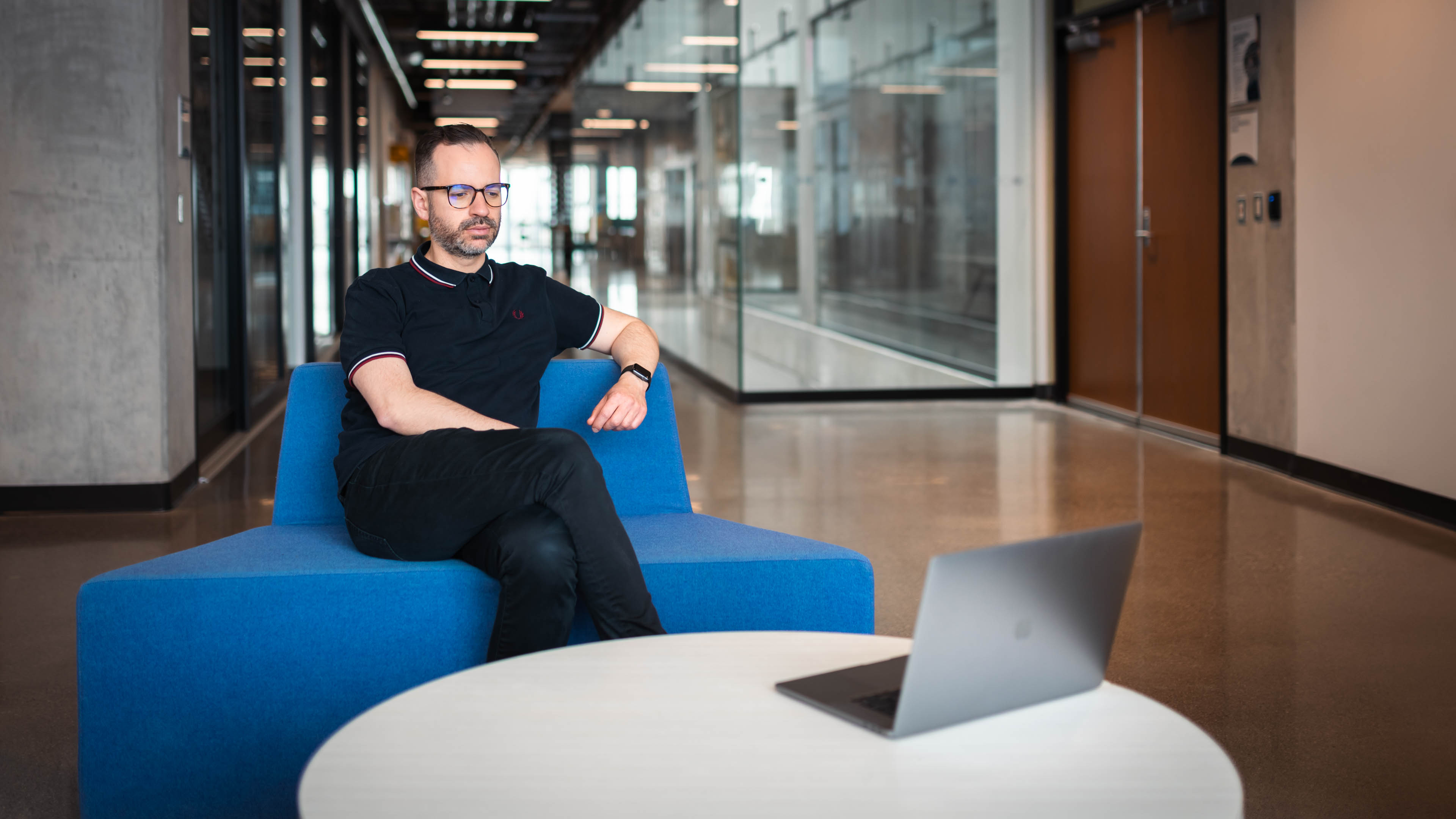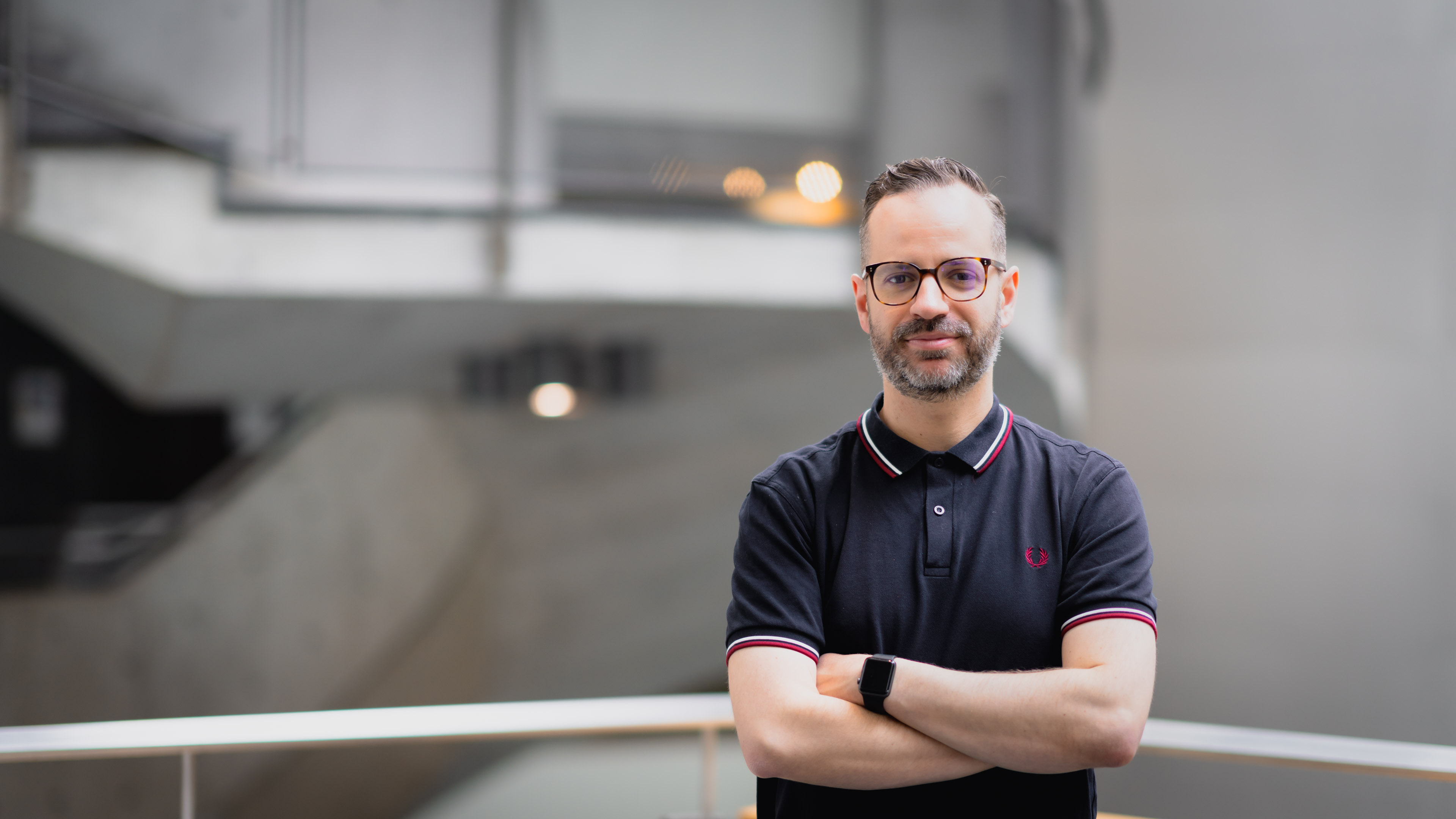Associate Head and instructor Marc Tavares explains how he distills concepts through timely references, from TV shows like “Adolescence” to singer Olivia Rodrigo

There’s nothing quite like the feeling of being immersed in a binge-worthy TV show with extraordinary storytelling and compelling visuals.
University of Guelph-Humber (U of GH) Media & Communication Studies Associate Head and instructor Marc Tavares shares this sentiment and uses pop culture references, including ones from TV, to spark creativity and fresh ideas among his students.
“Students are inspired by the shows they watch and gain insight into how they can apply those filmmaking and storytelling concepts to their own content creation,” he said.
Lately, Tavares has been bingeing the Netflix show, “Adolescence.” The program is unique because each episode is all shot in one take. The camera is passed around by camera operators and even clipped to a drone that flies to another location; it’s a technique Tavares describes as “extraordinary.” He was so engaged in the show and connected with the characters that he said he couldn’t even tear himself away from his television the entire episode to get a glass of water. He finds that these simple, yet effective (albeit precise) techniques make the show immersive and allow the viewers to connect with the characters.
“The creators chose to use the one-shot method to create a feeling and closeness to the characters that really resonated emotionally with the audience. Watching it all happen in real time felt raw and unfiltered, pulling us right into the characters’ personal spaces,” Tavares said. “The Bear season 1 episode 7 is another incredible example of a single, continuous take episode shot in real time to establish that same chaotic, intense, and emotional rawness that helps us feel connected and close to the characters. It’s authentic and human, and can also make you feel really anxious.”

While the Media & Communication Studies program isn’t a film school, Tavares said that these foundational cinematic techniques and storytelling principles can be taught to students, who can apply them to their own endeavours, like social media or promotional videos – transferrable skills from real-world television and pop culture being applied. It’s all about going back to basics: strong storytelling with enthralling visuals.
Tavares sparks creativity among his students and explains concepts in the classroom through using these pop culture references, which resonates with students who take his Media Production Toolkit class, including with Media & Communication Studies student Alexia Panagopoulos last semester.
“My peers and I appreciated that he'd give examples that we would understand and relate to. With all these references that were relevant to us, it made the class enjoyable, easy to understand, and I find that it built a stronger relationship with the professor,” Panagopoulos said. “I appreciate his integration of pop culture references, because it helps students to understand the relevance of what we are learning and how it could be used in our careers.”
Furthermore, in examining Tavares’ new favourite show, Adolescence, one may note that the show was shot on a camera that’s considered relatively inexpensive for the professional film and television industry thanks to advancements in technology. In seeing such a high-quality show shot this way and using the example of the Olivia Rodrigo music video shot entirely on an iPhone, Tavares wants students to feel empowered to know that creating something great isn’t about the technology, it’s about the skillsets. In class, he has also pointed to the show, “The Bear,” as another pop culture example.
And these skillsets could be honed through an education at U of GH. But it’s important to note, camera and storytelling techniques are not one-size-fits-all; the emphasis, Tavares said, is on “creating content that feels authentic and engages the audience.”
“It’s important to introduce students to something they maybe haven’t seen before. It can help them envision all the creative potential and possibilities for their own work,” Tavares said.
For more news on the Media & Communication Studies program at U of GH, have a look at the latest stories:
Getting to know U of GH’s Media and Communication Studies Chair Kathy Ullyott
What does it take to be a successful influencer?


